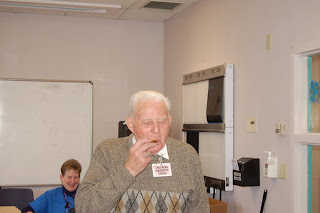
It’s not uncommon for people, sometimes strangers, to come up and hug Shirley Howard. After all, for many pediatric oncology patients and their families, she is a guardian angel.
For more than 30 years, Howard has been a tireless advocate and fund raiser for children’s cancer research and facilities. Howard, the president and founder of the Children’s Cancer Foundation, was honored last month by the Association of Fund Raising Professionals with the 2009 Impact of One Award and received a standing ovation as she went to accept her award, which was the first of its kind. Howard was nominated by Sinai Hospital, and is pictured above with Sinai Hospital President Neil Meltzer.
“I felt very humbled by the award,” Howard says. “It never goes to my head.”
When she began her work, originally through the Variety club, hospitals had nothing for pediatric oncology patients. Children were often put in the same ward as other sick pediatric patients, meaning their weak immune systems had to try to fight cancer and diseases like chicken pox. There was very little research or funding for research on pediatric oncology.
Since its inception in 1993, CCF has raised 30.5 million dollars, which has benefited the National Institutes of Health, the University of Maryland Medical Center, Johns Hopkins Hospital, Lombardi Cancer Institute, the Children’s National Medical Center and Sinai Hospital. The foundation is one of the few funding sources for up and coming researchers. One example: many years ago, one of the recipients of its research grants was a fellow at Johns Hopkins named Joseph Wiley, M.D., who is today the chief of the Herman & Walter Samuelson’s Children’s Hospital at Sinai.
Last year, a $50,000 grant helped establish the pediatric oncology laboratory at Sinai, and this year $75,000 is going toward the capital campaign to expand the Herman & Walter Samuelson’s Children’s Hospital. The groundbreaking for the expansion and renovation of the children’s hospital will be Thursday, December 3.
“The support of the Children’s Cancer Foundation is invaluable, not only for our capital campaign, but for our research-driven efforts in pediatric oncology,” says Shannon Wollman, development manager at LifeBridge Health.
CCF Executive Director Diane Perry, who is also Howard’s daughter, says it’s hard to find a pediatric oncology unit in the area that hasn’t benefited from the foundation and her mother’s dedication.
“This is my mother’s legacy,” Perry says.
While Howard’s work is by no means done, she says it’s encouraging that while only one child in 10 used to survive cancer, that number is now 8 in 10. Now 85, she’s showing little signs of slowing down. She has been invited to weddings, christenings, bat mitzvahs and other life markers for pediatric oncology patients who have benefited from the foundation’s work.
“I have the best partner in the world – I have substantial help from God,” Howard says. “There’s a lot of love that has poured out.”




